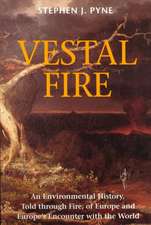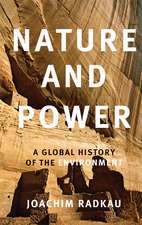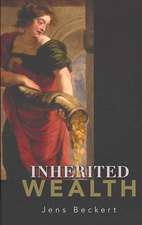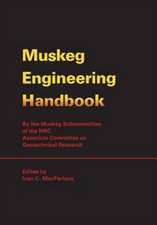DDT, Silent Spring, and the Rise of Environmenta – Classic Texts: Weyerhaeuser Environmental Classics
Autor Thomas Dunlap, William Crononen Limba Engleză Paperback – 19 aug 2008
| Toate formatele și edițiile | Preț | Express |
|---|---|---|
| Paperback (1) | 149.82 lei 6-8 săpt. | |
| MV – University of Washington Press – 19 aug 2008 | 149.82 lei 6-8 săpt. | |
| Hardback (1) | 641.78 lei 6-8 săpt. | |
| MV – University of Washington Press – 13 sep 2015 | 641.78 lei 6-8 săpt. |
Preț: 149.82 lei
Nou
Puncte Express: 225
Preț estimativ în valută:
28.67€ • 30.01$ • 23.72£
28.67€ • 30.01$ • 23.72£
Carte tipărită la comandă
Livrare economică 05-19 aprilie
Preluare comenzi: 021 569.72.76
Specificații
ISBN-13: 9780295988344
ISBN-10: 0295988347
Pagini: 160
Ilustrații: 2 illustrations
Dimensiuni: 168 x 226 x 10 mm
Greutate: 0.23 kg
Ediția:New.
Editura: MV – University of Washington Press
Seria Weyerhaeuser Environmental Classics
ISBN-10: 0295988347
Pagini: 160
Ilustrații: 2 illustrations
Dimensiuni: 168 x 226 x 10 mm
Greutate: 0.23 kg
Ediția:New.
Editura: MV – University of Washington Press
Seria Weyerhaeuser Environmental Classics
Cuprins
Foreword by William Cronon; Preface and Acknowledgments; IntroductionBACKGROUNDViews of NatureStephen A. Forbes, The Ecological Foundations of Applied Entomology; Leland O. Howard, The War against InsectsPre-DDT Pesticides and DDTs Use in World War IIPaul Neal et al., A Study of the Effects of Lead Arsenate Exposure on Orchardists and Consumers of Sprayed Fruit; Paul Neal et al., Toxicity and Potential Dangers of Aerosols,Mists, and Dusting Powders Containing DDTDDTS BRIGHT PROMISE AND NEGLECTED PROBLEMSDDT as Miracle ChemicalBrigadier General James Stevens Simmons How Magic is DDT?; Aerosol Insecticides; Clay Lyle, Achievements and Possibilities in Pest EradicationEarly WarningsPaul B. Dunbar, The Food and Drug Administration Looks at Insecticides; Clarence Cottam and Elmer Higgins,DDT and Its Effect on Fish and WildlifeRISING CONCERN ABOUT NEW PROBLEMSDDT, Food Chains, and WildlifeRoy J. Barker, Notes on Some Ecological Effects of DDT Sprayed on Elms; Editorial from Bird Study; Derek A. Ratcliffe, The Status of the Peregrine in Great Britain; Robert Rudd, Pesticides and the Living Landscape; Thomas R. Dunlap, Interview with Joseph J. Hickey; Robert S. Strother, Backfire in the War against InsectsTHE STORM OVER SILENT SPRINGPublic AlarmMorton Mintz, Heroine of FDA Keeps Bad Drug Off Market; Rachel Carson, A Fable for TomorrowReactionsPresidents Science Advisory Committee, Use of Pesticides; Robert H.White-Stevens, Communications Create Understanding; Edwin Diamond, The Myth of the Pesticide Menace; Robert Gillette,DDT: Its Days are Numbered, Except Perhaps in Pepper FieldsDDT AND MALARIAThomas Sowell, Intended Consequences; Thomas R. Hawkins, Rereading Silent Spring; May Berenbaum, If Malarias the Problem, DDTs Not the Only AnswerNotes on Further Reading; Credits; Index
Recenzii
A superb collection. Included here are the texts that galvanized Rachel Carson to write Silent Spring and inspired her to insist on a new vision of cooperation between man and nature. Dunlaps book provides the context for one of the defining debates of our time and shows us why a resolution remains so elusive. Linda Lear, biographer and author of Rachel Carson: Witness for NatureTo understand how DDT could win its developer a Nobel Prize and then be banned just decades later, read this book. Read it, too, if you want to understand the modern environmental movement. In these pages, those who helped make history tell you, in their own words, what happened. Edmund P. Russell, University of VirginiaThis is a wonderful collection that will prove quite useful for classes in environmental studies and American environmental history. Rachel Carson deserves far more attention in undergraduate courses, and this collection will facilitate that. Historians studying conflicts over pesticides will also find the selections thought-provoking and occasionally surprising. Nancy Langston, Professor, Nelson Institute for Environmental Studies, University of Wisconsin-Madison A fascinating and thought-provoking collection of texts that will give readers whole new perspectives on this critical controversy in the history of environmental thought. William Cronon, University of Wisconsin-MadisonStudents can use this collection to gain greater understanding of the development of the environmental movement, changing ideas about progress, science, and technology, as well as changing ideas about the role of nature in the modern world. David Stradling, University of Cincinnati
"A superb collection. Included here are the texts that galvanized Rachel Carson to write Silent Spring and inspired her to insist on a new vision of cooperation between man and nature. Dunlap's book provides the context for one of the defining debates of our time and shows us why a resolution remains so elusive." Linda Lear, biographer and author of Rachel Carson: Witness for Nature "To understand how DDT could win its developer a Nobel Prize and then be banned just decades later, read this book. Read it, too, if you want to understand the modern environmental movement. In these pages, those who helped make history tell you, in their own words, what happened." Edmund P. Russell, University of Virginia "This is a wonderful collection that will prove quite useful for classes in environmental studies and American environmental history. Rachel Carson deserves far more attention in undergraduate courses, and this collection will facilitate that. Historians studying conflicts over pesticides will also find the selections thought-provoking and occasionally surprising." Nancy Langston, Professor, Nelson Institute for Environmental Studies, University of Wisconsin-Madison "A fascinating and thought-provoking collection of texts that will give readers whole new perspectives on this critical controversy in the history of environmental thought." William Cronon, University of Wisconsin-Madison "Students can use this collection to gain greater understanding of the development of the environmental movement, changing ideas about progress, science, and technology, as well as changing ideas about the role of nature in the modern world." David Stradling, University of Cincinnati
"A superb collection. Included here are the texts that galvanized Rachel Carson to write Silent Spring and inspired her to insist on a new vision of cooperation between man and nature. Dunlap's book provides the context for one of the defining debates of our time and shows us why a resolution remains so elusive." Linda Lear, biographer and author of Rachel Carson: Witness for Nature "To understand how DDT could win its developer a Nobel Prize and then be banned just decades later, read this book. Read it, too, if you want to understand the modern environmental movement. In these pages, those who helped make history tell you, in their own words, what happened." Edmund P. Russell, University of Virginia "This is a wonderful collection that will prove quite useful for classes in environmental studies and American environmental history. Rachel Carson deserves far more attention in undergraduate courses, and this collection will facilitate that. Historians studying conflicts over pesticides will also find the selections thought-provoking and occasionally surprising." Nancy Langston, Professor, Nelson Institute for Environmental Studies, University of Wisconsin-Madison "A fascinating and thought-provoking collection of texts that will give readers whole new perspectives on this critical controversy in the history of environmental thought." William Cronon, University of Wisconsin-Madison "Students can use this collection to gain greater understanding of the development of the environmental movement, changing ideas about progress, science, and technology, as well as changing ideas about the role of nature in the modern world." David Stradling, University of Cincinnati
Notă biografică
Descriere
Presents readings on the controversy over DDT (notably Rachel Carsons Silent Spring) and examines shifting attitudes surrounding the use of pesticides.















